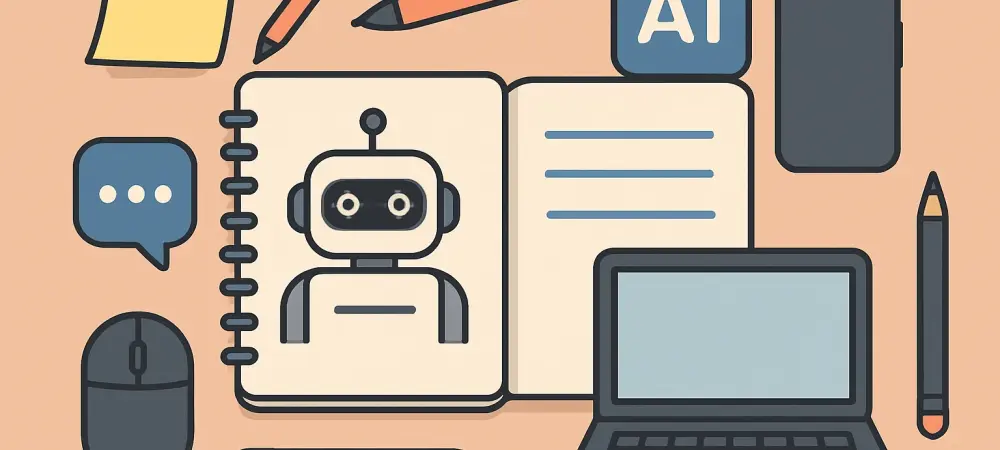Imagine sitting through a two-hour lecture or an intense business meeting, drowning in a flood of information, only to realize that capturing every key point feels like an impossible task, especially in today’s fast-paced digital landscape where the struggle to manage information overload affects students, professionals, and anyone striving to stay organized. Enter AI note-taking prompts—a technology that promises to transform raw data into concise summaries, clear explanations, and actionable insights with just a few structured instructions. This review delves into the capabilities of these innovative tools, exploring how they are reshaping productivity and learning in both academic and professional spheres.
Core Features of AI Note-Taking Technology
Summarization Power for Efficiency
AI note-taking prompts excel at distilling lengthy content into bite-sized, essential points. Whether it’s extracting the crux of a university lecture or pinpointing critical decisions from a corporate discussion, these tools save significant time by automating the summarization process. Their ability to focus on core ideas ensures that users can quickly review material without wading through hours of notes or recordings.
Beyond mere time-saving, the technology maintains the integrity of the original content. Advanced algorithms prioritize relevance, ensuring that no vital information slips through the cracks. This feature proves invaluable for individuals juggling multiple responsibilities, allowing them to stay on top of key takeaways without sacrificing depth or context.
Clarification for Enhanced Understanding
Another standout feature is the capacity to simplify complex topics through targeted prompts. By breaking down intricate concepts into plain language or relatable examples, AI aids learners and professionals in grasping challenging material. This is particularly beneficial in fields like science or law, where jargon and dense information often create barriers to comprehension.
The clarification tools go a step further by tailoring explanations to user needs. For instance, a student struggling with a technical subject can receive a simplified breakdown, while a manager can get a concise interpretation of industry-specific terms. Such adaptability underscores the technology’s role in bridging knowledge gaps across diverse audiences.
Performance Analysis in Real-World Settings
Applications Across Industries
AI note-taking prompts are making waves in various sectors, demonstrating their versatility in practical scenarios. Students leverage summarization tools to condense lecture content for efficient study sessions, while professionals use action-oriented prompts to transform meeting discussions into clear tasks with deadlines. This wide applicability highlights the technology’s potential to cater to distinct objectives.
In project management, these prompts shine by organizing discussions into structured outcomes. Teams can rely on AI to generate follow-up actions, ensuring accountability and progress tracking. Similarly, educators and researchers benefit from reflection prompts that encourage critical thinking by prompting deeper analysis of topics or ideas.
Limitations Impacting Effectiveness
Despite their strengths, AI note-taking prompts are not without challenges. Accuracy remains a concern, especially when input data is unclear or incomplete, leading to outputs that may miss nuances or misinterpret intent. Users must often double-check results to ensure reliability, which can offset some of the time-saving benefits.
Additionally, over-reliance on AI risks diminishing manual note-taking skills and critical engagement with content. If users depend solely on automated tools, they may struggle to process information independently. Ongoing improvements in algorithms and user guidelines aim to address these issues, striving for a balance between technological assistance and human oversight.
Emerging Trends and Innovations
Integration into Daily Workflows
A notable trend in 2025 is the seamless integration of AI prompts into everyday routines. No longer just a supplementary aid, this technology has become a core component of information management for many. From syncing with digital calendars to aligning with task management platforms, AI is embedding itself into the fabric of productivity systems.
Customization is another area of rapid advancement. Developers are focusing on tailoring prompts to individual user preferences, ensuring relevance across different contexts—be it academic research or corporate strategy. This shift toward personalization enhances the user experience, making AI an even more indispensable tool.
Advancements in Language Processing
The evolution of natural language processing is pushing AI note-taking prompts to new heights. Enhanced algorithms are improving context awareness, enabling the technology to produce outputs that better reflect the subtleties of human communication. This progress promises more intuitive interactions and fewer misinterpretations in complex discussions.
Looking ahead from 2025 to 2027, further breakthroughs are anticipated in how AI understands and processes diverse linguistic patterns. Such developments could make these tools even more adept at handling specialized vocabularies or cultural nuances, broadening their appeal and utility in global settings.
Final Verdict on AI Note-Taking Prompts
Reflecting on the comprehensive evaluation, AI note-taking prompts prove to be a transformative force in managing information with efficiency and clarity. Their ability to summarize, clarify, and organize content stands out as a game-changer for students and professionals alike, despite hiccups in accuracy and the risk of over-dependence. As a next step, users should focus on providing detailed inputs and selecting prompts strategically to maximize reliability. Meanwhile, developers must continue refining algorithms to enhance precision and context sensitivity. Looking forward, integrating these tools with other digital ecosystems could unlock even greater potential, ensuring they remain a cornerstone of productivity in an increasingly data-driven world.

